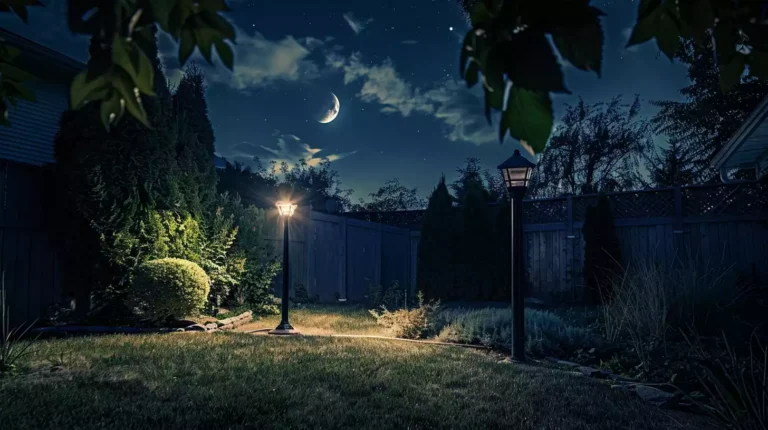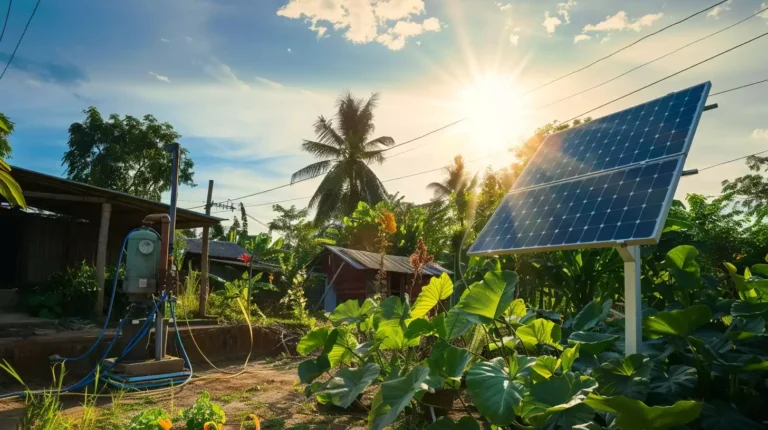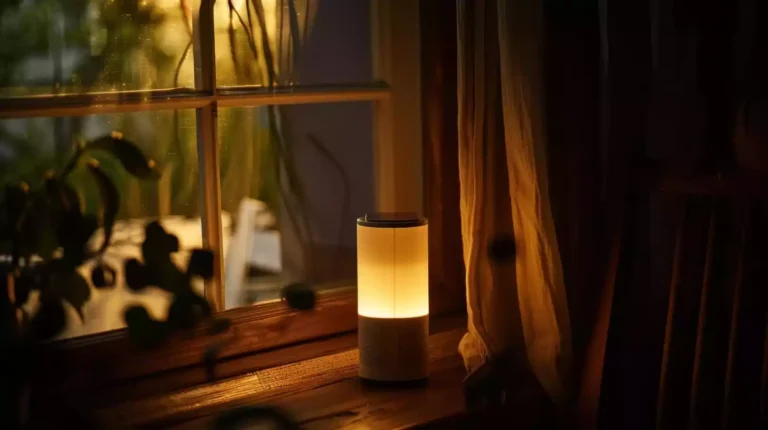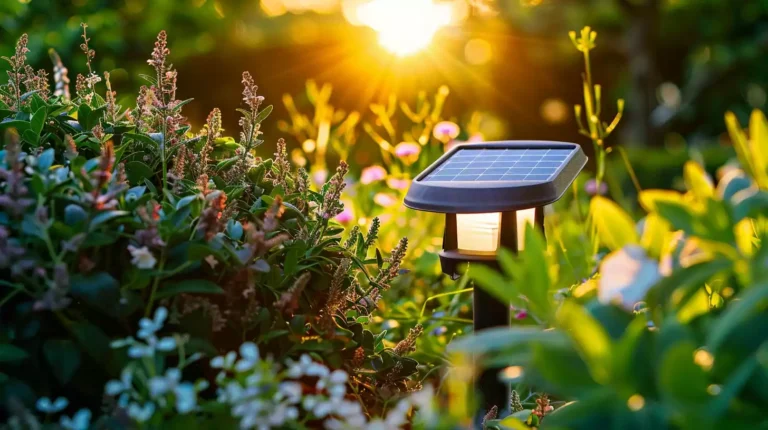Are Solar Lights Bad for Plants? (Can They Burn Them?)
Using solar lights for plants can have drawbacks. These lights might confuse plant rhythms and disrupt growth cycles. Bright solar lights can send mixed signals, affecting their balance. Management of light intensity becomes important for plant well-being.
Continual exposure might hinder natural cycles. Properly balancing light exposure is key. Artificial lighting can impact growth, so softer options are gentler. It’s essential to guarantee plant rest periods. Finding the right lighting balance is necessary. Careful consideration of these factors is critical for healthy plant development.
Want to discover how to safeguard your plants from potential harm caused by solar lights?
Main Points Covered Below
- Excessive exposure to bright solar lights can disrupt plant rhythms and growth regulation.
- Artificial lighting can confuse plants and hinder adaptation to seasonal changes.
- Proper management of light intensity is crucial to prevent harm to delicate plant balance.
- Soft, dim solar lights are less likely to harm plant growth compared to bright lights.
- Balancing light exposure and darkness is essential for maintaining plant health.
Potential Harm of Solar Lights
Bright solar lights can disrupt plant rhythms and confuse seasonal changes, potentially affecting their growth and development. Plants heavily rely on exposure to light to regulate their growth processes.
When exposed to intense solar lights for extended periods, plants may receive mixed signals regarding the time of year, leading to confusion in their seasonal cycles. This confusion can have detrimental effects on their overall health and development.
Excessive solar light exposure can throw off the delicate balance that plants need to thrive. While soft and dim solar lights may not cause significant harm, bright and concentrated lights can disrupt their natural cues, impacting their ability to determine the appropriate time for growth, flowering, or dormancy.
This disruption in their light cycles may result in stunted growth, reduced flowering, or even susceptibility to diseases.
Therefore it’s important to take into account the intensity and duration of solar light exposure when using such lighting in outdoor spaces to make sure that plants receive the right signals for best growth and health.
Disruption of Natural Light Cycles
Plants’ natural light cycles can be greatly disrupted by continuous exposure to strong or concentrated solar lights. The levels of light that plants receive play an important role in regulating their internal clock and growth patterns.
When exposed to artificial lighting, such as bright solar lights, plants may receive conflicting signals that can throw off their natural rhythms. This disruption can impact various aspects of plant growth, including flowering, fruiting, and overall development.
To illustrate the effect of light levels on plant growth:
| Light Levels | Impact on Plants |
|---|---|
| Low | Stunted growth and pale leaves |
| Moderate | Healthy growth and vibrant foliage |
| High | Accelerated growth but potential stress on the plant |
| Excessive | Disrupted natural cycles and potential harm to plants |
It is important to take into account the intensity and duration of artificial lighting to make sure that plants receive the right cues for their growth and development. Bright solar lights, if not properly managed, can confuse plants and hinder their ability to adapt to seasonal changes effectively.
Impact on Plant Growth
When considering the impact of solar lights on plant growth, it’s essential to pay attention to the light spectrum effects and the duration of exposure.
Different plants respond uniquely to varying light intensities, affecting their growth patterns.
Understanding these aspects can help us guarantee our plants receive the right amount of light for healthy development.
Light Spectrum Effects
Considering the impact of light spectrum on plant growth is essential for understanding how solar lights may affect their development. Different wavelengths of light, such as visible spectrum light, infrared, and ultraviolet light, play vital roles in plant processes like photosynthesis and flowering. Here’s a quick breakdown to simplify the concept:
| Light Type | Impact on Plants |
|---|---|
| Visible Spectrum | Essential for photosynthesis and overall plant growth |
| Infrared Light | Can promote elongation in stems and overall growth |
| Ultraviolet Light | Excessive exposure can cause damage to plant tissues |
Understanding how these different light spectrums interact with plants can help us make informed decisions when using solar lights to support healthy plant growth.
Duration of Exposure
Excessive exposure to solar lights can greatly impact the growth of plants. The duration of light exposure plays a vital role in how it affects your plants. Plants need a balance in the amount of light they receive to thrive.
Too much light emitted by solar lights can disrupt their natural growth patterns and rhythms. Prolonged exposure to intense or focused solar lights may interfere with plants’ ability to sense seasonal changes, leading to potential growth issues.
It’s important to be mindful of how long your plants are exposed to solar lights to avoid negative impacts on their development. Consider using softer, dimmer solar lights for a more plant-friendly lighting option.
Balancing Light Exposure
Balancing light exposure for plants is essential to ensuring their natural rhythms remain undisturbed. When it comes to selecting landscape lighting, it’s vital to contemplate how the lighting affects plants.
Solar lights emitting blue light can influence plants’ ability to perceive seasonal changes. Opting for soft, dim solar lights for mood lighting is a gentler choice that’s less likely to harm plants compared to bright or concentrated lights.
Plants rely on light cues to determine the time of year, affecting their growth and blooming cycles. Excessive exposure to artificial light, especially during the night, can disrupt these cues, potentially leading to unpreparedness for seasonal shifts.
By balancing providing adequate light for your outdoor space and minimizing the impact on plants, you can create a harmonious environment where both nature and design coexist seamlessly.
Negative Effects of Artificial Light
Artificial light from solar sources can disrupt plants’ natural rhythms and growth cycles, potentially leading to detrimental effects on their health. When plants are exposed to excessive or bright solar lights, it can throw off their internal clocks, affecting essential processes like photosynthesis and energy production.
This disruption in plant growth can have serious consequences, as it may confuse them about seasonal changes and hinder their ability to adapt accordingly.
Plants rely on the natural cycle of light and darkness to regulate their growth and development. Constant exposure to strong solar lights can disturb this delicate balance, impacting their energy levels and overall health.
Without proper adjustments to changing light conditions, plants may struggle to undergo vital processes like photosynthesis effectively, affecting their ability to thrive and survive in their environment.
It’s important to be mindful of the type and intensity of artificial light used around plants to avoid causing harm to their growth and well-being. Soft, dim solar lights are less likely to disrupt plant rhythms compared to bright or concentrated lights, helping plants maintain their natural cycles and support healthy growth.
Strategies to Protect Plants
When it comes to protecting plants from the potential negative effects of solar lights, considering the distance between the light and the plants is essential. Placing lights at an appropriate distance can help mitigate any harmful impacts on plant growth caused by excessive light exposure.
Utilizing shade options can offer plants protection from overly intense or prolonged light exposure.
Light Distance Impact
Placing solar lights at a distance of 6-10 feet from plants guarantees minimal harm and promotes plant health. This ensures that the light emitted by the solar lights won’t be too intense, preventing any damage to the plants in your landscape.
By maintaining this safe distance, you create a buffer zone that allows plants to receive the right amount of light without overwhelming them. If needed, you can also adjust the intensity of the lights or use shields to provide additional protection to your green friends.
Properly positioning your solar lights not only enhances the aesthetics of your garden but also safeguards the well-being of your plants, creating a harmonious balance between light and plant growth.
Will Using Solar Lights in My Garden Damage My Plants?
Using solar lights in your garden can actually benefit your plants. By following some useful tips for solar light placement, such as avoiding direct light on sensitive plants and placing lights strategically to enhance natural light, you can create a beautiful garden ambiance without harming your plants.
Shade Options Available
Using solar lights with adjustable shades offers an effective strategy to protect plants from harmful direct light exposure while promoting their ideal growth conditions. Shade options in solar lights play a significant role in regulating light intensity, ensuring ideal plant health.
By customizing the shades based on plant light requirements, overexposure is prevented, reducing stress on the plants. The flexibility provided by adjustable shades allows for maintaining ideal lighting conditions, benefiting overall plant growth and development.
With shading features, solar lights become valuable tools in creating a balanced environment for plants, shielding them from excessive light while supporting their well-being. Opting for solar lights with shade options is a proactive step towards ensuring the health and vitality of your plants.
Ensuring Proper Rest for Plants
Ensuring plants receive sufficient rest periods is essential for their overall health and development. Here are four key points to keep in mind when it comes to providing plants with the rest they need:
- Natural Rhythms: Plants, like humans, have internal clocks that regulate their growth and development. Disrupting these natural rhythms by exposing them to continuous bright lighting can negatively impact plant growth.
- Recovery and Repair: Rest periods allow plants to recover from stress, repair any damage, and prepare for new growth. Without proper rest, plants may struggle to thrive.
- Essential Processes: During rest periods, plants undergo important processes such as nutrient absorption, energy storage, and cell division. These processes are essential for healthy plant development.
- Avoiding Overnight Exposure: To make sure plants get the rest they need, avoid leaving solar lights on overnight. Balancing light exposure with darkness is critical for promoting excellent growth and well-being in plants.
Finding the Right Lighting Balance
Balancing the amount of light plants receive is vital for their health and development, especially when considering the impact of solar lights. When it comes to finding the right lighting balance, it’s important to pay attention to the intensity and duration of the lights.
Soft and dim solar lights can create a cozy ambiance without harming your plants, but bright or concentrated lights may have adverse effects on their growth. Continuous exposure to solar lights can disrupt the plant’s internal clock, affecting their ability to sense seasonal changes.
This disturbance in plant rhythms might lead to unpreparedness for shifts in weather and daylight hours.
To strike the perfect lighting balance, consider using landscape lighting fixtures strategically placed to illuminate pathways or specific areas without overwhelming nearby plants.
Understanding how light influences plant cells can help you create a harmonious environment where your plants can thrive while still enjoying the benefits of solar lights.
Final Thoughts
While solar lights can potentially disrupt natural light cycles and impact plant growth, there are strategies to protect your plants. By ensuring proper rest and finding the right balance of light exposure, you can help your plants thrive.
Remember, a little bit of care and attention can go a long way in keeping your green friends happy and healthy. So, shine on with your solar lights, but remember to keep an eye on your plants too!






